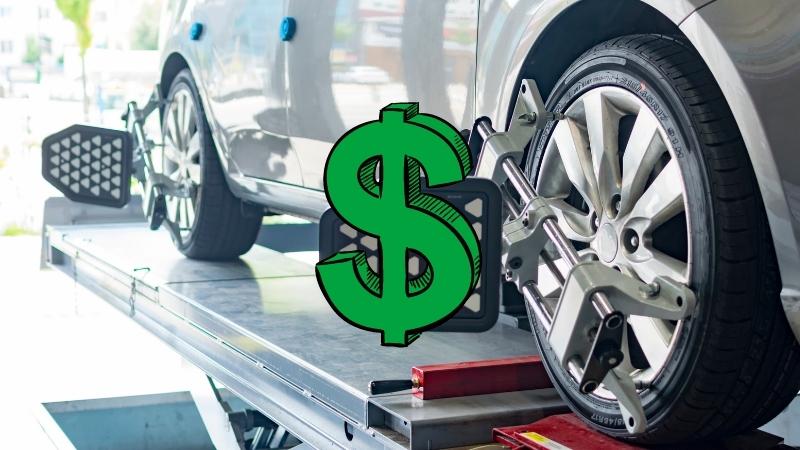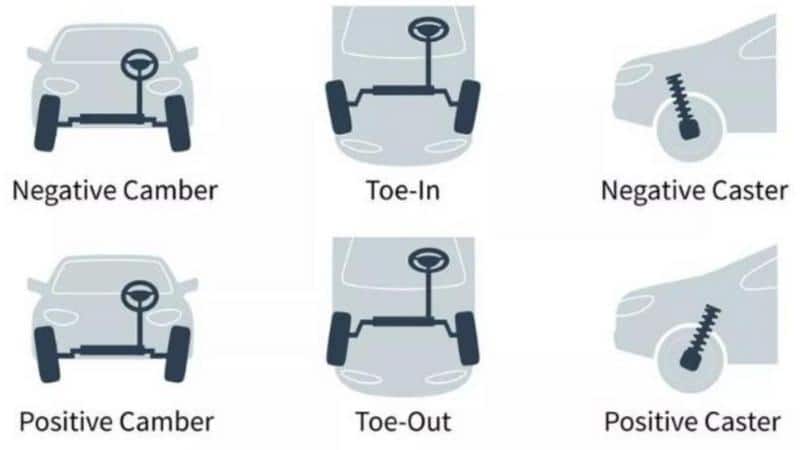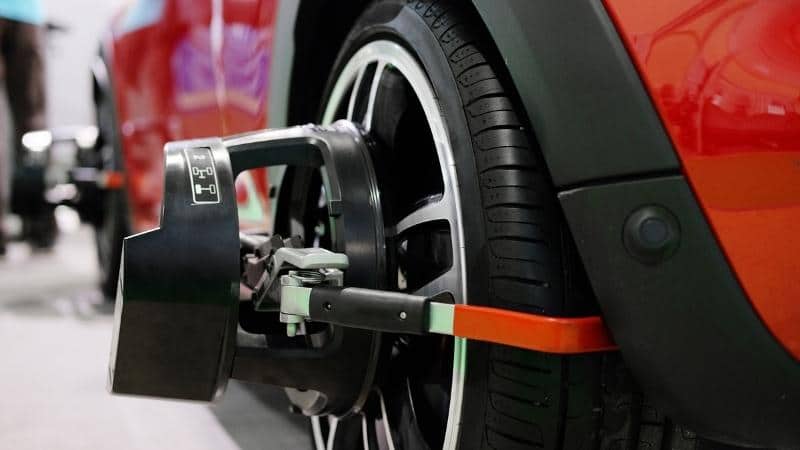Tire alignment is a car maintenance activity that is very smart to do in order to avoid unnecessary wear on your tires as well as providing a smooth and straight driving experience.
With that said, do I need a wheel alignment after replacing my tires? After replacing tires your wheel alignment may no longer be accurate. For this reason you should do a wheel alignment. It sets the angles of your wheels to original specifications for optimum gas mileage, smooth ride, proper road contact, and extended tire life.
Below is everything you should know concerning tire/wheel alignment.
What is Tire/Wheel Alignment?
Tire or wheel alignment is the correction and adjustment of a vehicle’s suspension related to its wheels. If your wheels are aligned, they will move straight and true without pulling to the left or right when driving. In addition, a proper tire alignment prevents any irregular or premature tire wear and any possible suspension problems in the future.
A professional technician should do any tire suspension to avoid frustrations in your riding experience.
What Happens if I Don’t Get an Alignment After Putting on New Tires?
After putting on new tires, a tire alignment is not a must, but it is a wise idea. A tire alignment ensures that all your tires are well inclined with each other and the ground.
If you don’t get your new tires aligned, you may end up having a rough ride and uneven wear of your tires. This may reduce the lifespan of your tires. Consequently, tire alignment will help you get more miles from your new tires.
How do I Know if I Need a Wheel Alignment?
There are many ways to know that your vehicle requires a tire alignment. If you see any of these indicators, ensure your alignment is done as soon as possible.
- Vehicle pulling to the right or left. If your vehicle pulls to the left or right as your hands are off the steering wheel, then you need an alignment for your tire.
- Steering wheel vibration. Pulsing feedback or shaking the steering wheel means your car alignment is out of the spec.
- Uneven tread wear. If you realize that the outside or inside of your tires is wearing out faster, then an alignment should be done. The uneven wear may happen in all the tires or just one or two.
- Steering wheel off-center when driving straight. If your vehicle’s steering wheel is off-center or pointing in a different direction after being centered, then it needs to be aligned.
Do I Need to Get All Four Tires Aligned at Once When Replacing Tires?
Yes, most vehicles today, such as vans, cars, and small SUVs, need all four wheels aligned at the same time. Some small vehicles having solid rear axles need only their front tires aligned. However, even with two tire alignments, your technician should assess the rear tires for any damage that may affect your car’s performance.
If you can have all the four wheels aligned, then let it be done. If that’s not possible, let your front tires be aligned.
How Much Does a Wheel Alignment Cost?

The alignment cost varies from the car model to the mechanic servicing your car and the equipment used. However, depending on where you get your tire alignment, the average cost ranges between $50 to $100.
Therefore, you should budget for about $100 and $200 if you need to get all your four tires aligned. A complete 4-wheel alignment is the best for your vehicle.
Most high-performance and luxury vehicles need special equipment and computers for tire alignment and take more time than other cars. This results in high costs of alignment.
Though a car dealership performs alignments for their brand, not all shops are able to work on every make and brand. Therefore, you will pay more for tire alignment at a dealership.
However, at superstores that have auto repair sections such as Walmart and Costco, you will pay less for a tire alignment. Also, chains such as Goodyear, Firestone, Pep Boys, and Discount Tire all offer the same price range.
Note that the mechanic may release other parts that require repair or replacement during the tire alignment process. This will raise the alignment cost to about $150-$500 if you need additional maintenance done.
If not expired, other service providers may perform your tire alignment once that is covered under your vehicle warranty. Other companies allow you to perform tire alignments for free if your warranty is extended or any additional alignments for the covered period.
What Does Toe, Caster & Camber Mean?

When a technician assesses your tire alignment, they are always anxious about three things:
Toe alignment
Toe alignment is the degree to which your vehicle tires turn outward or inward when observed from above.
Stand up and watch your feet downward if that’s not clear. Incline them inward towards the axes of your body.
If the tires on your vehicle are inclined in the same manner, then that is the toe-in alignment. Incline your feet outward, and you realize toe-out alignment. All these require adjustment.
Caster alignment
Caster alignment helps in balancing the steering, cornering, and stability. To be specific, this is the angle of the steering axis when observed from the side of your car.
If you observe a negative caster, the steering axis is towards the front of your vehicle. On the other hand, a positive caster implies that the steering axis is a tilt toward the driver.
Camber
This is the outward or inward angle of the tire when observed from the front of the car.
Too much positive or negative camber, also known as outward or inward tilt respectively, means you have improper alignment and should be adjusted.
Worn ball joints, bearings, and other wheel suspension parts may lead to camber misalignment.
The Bottom Line
If getting your tire alignment appears to be expensive, then it could be more costly to ignore it.
Postponing this corrective maintenance implies that you will end up replacing your car tires more frequently. Also, driving with unaligned tires may affect other parts of your vehicle, such as your suspension.
Spending hundred dollars every year on wheel alignment will help you save much more from expensive repairs.
Our advice is to liaise with your manufacturer or a professional technician to do your tire alignment.
Hi, my name is Niklas, the head content creator & CEO of Whirling Wheelz. I am very interested in vehicles of all kinds, mainly cars. I have a car mechanics degree from high school and a big hobby of mine is to follow the WRC (World Rally Championship) both online and through travel.


